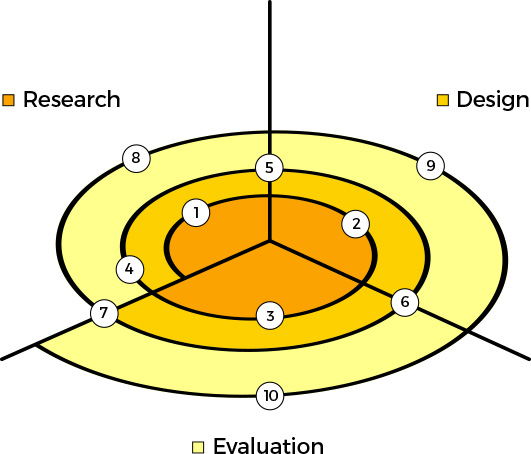Our approach is inspired by the Spiral model:
First we start getting insights through initial UX research from the business/product owners and the product design team while reviewing the competition. As the process of understanding and problem definition unfolds we involve stakeholders and users in a gradual and increasing manner to co-design and test possible solutions.
As we go through all the phases i.e. research, design and evaluation we always ground our decisions on the main business aspects (strategy, goals & needs), the problem that the product has to solve and the context of use. These elements are pivotal and form the basis of this spiral process. Each phase begins with an experience design goal and ends with customers’ & users’ evaluation.

- Research & discover, ideate, frame & define the problem.
- Validate with business owners, stakeholders and users.
- Set UX specifications and metrics.
4. Visualize solutions
5. Design prototypes
6. Evaluate
7. Launch
8. Monitor
9. Measure
10. Evaluate
• Additional UX requirements, specifications and metrics can be gradually incorporated and validated in the process in a systematic way
• Customer feedback and business goals have pivotal role as the UX process unfolds
• Cost estimation becomes easy and efficient as the design of prototypes is conducted in small fragments
• The process can be easily adjusted to several software development methodologies e.g. waterfall, agile etc.